Service Bureau Walkabout
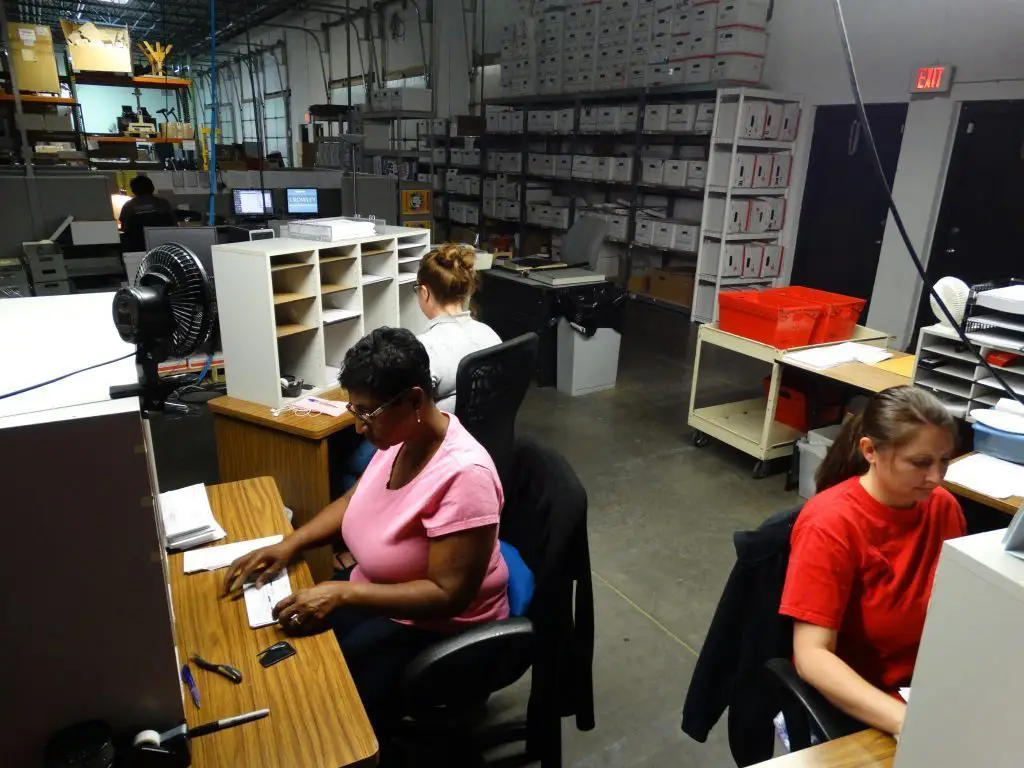
In need of a little blog inspiration today, I went to the one location in our Frederick, Md. headquarters that always makes me happy – our Crowley Imaging service bureau. While I’m intrigued by the equipment, manufacturing and technical sides of our business, my artsy right brain loves taking the 26 steps from my desk to the threshold of our imaging division. That 27th step never fails to transport me from desk jockey to treasure hunter. The lights are always dim (for better image quality and viewing) and the gloom adds an air of suspense. Here’s what I discovered today.

Turning to the right, I encountered a table and several rolling racks full of bound books. When opened, the books reveal thousands of neatly handwritten and typewritten membership applications dating back to the early 1900’s. They belong to a lineage society formed over 100 years ago for members that can prove an unbroken paternal line to a Colonial Founder with an intermediary Revolutionary Patriot. With my off-the-boat heritage (of which I’m proud), there’s no chance of finding a Stasiowski among the applicants. I move on.
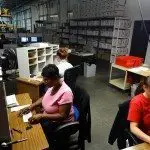
I surprise Helen, Tanya and Amanda, who are working diligently to open and sort mail, prepping the documents for scanning. Between them, they handle a weekly estimate of 30,000 pieces of mail for approximately 8,000 medical claims. Once the claims are opened and sorted by type, they are scanned on an InoTec document scanner and immediately delivered electronically to the client for claims processing.
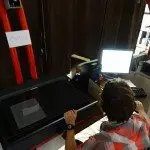
Making a hard right, I find myself on the dark side. Instead of evil, I’m surrounded by Zeutschel overhead scanners and their operators. For better image quality, the overhead lights are completely turned off and each operator works by desk lamp. The operators are scanning the private papers of a well-known Secretary of State. Handwritten notes. Speeches. Receipts. Correspondence. Eventually, these papers will be posted online for public access. Makes me wonder about the story my own private papers would tell. Do I even have private papers? Does Facebook count? I hope not.
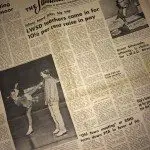
At the end of “Zeutschel Lane” – truly an avenue of the high-end planetary scanners – sit several large stacks of newspapers waiting to be scanned. One quick glance at the 1964 edition on top and I assess that the “turbulent ‘60s” seem pretty tame to today’s headlines. Or maybe Redmond, WA was just a great place to get away from it all.
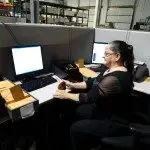
Looping back into the dim light, I see Tina operating four C400 aperture card scanners simultaneously. She is digitizing thousands of aperture cards that contain schematics, drawings and other information related to the history and operation of a public works entity. When complete, the digitized images will be indexed so that they can be easily accessed on the organization’s network. I imagine the hours of time that might be saved when the repair crews need a drawing of the original 1936 waterworks at Elm and Broadway that is now just a key stroke away.
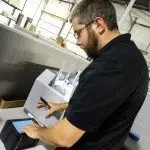
Directly behind Tina is Kris, who is running two Wicks and Wilson 7750 microfiche scanners. When I ask Kris what he’s working on, his enthusiasm is infectious. It’s his first time working with these particular scanners and he’s thrilled with the results. “On a 13×16 COM fiche, there are typically 209 images. With the 7750’s, I’m able to scan, process and output all 209 fiche images in one minute. That’s just crazy. I could talk about this all day.” Not having all day – but with my interest piqued – I move on.
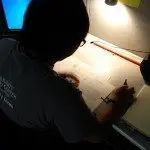
Say what? Just one station over, I traveled from warp speed to snail’s pace. Today, Vincent is tasked with prepping files for scanning from a non-profit organization – a necessary evil for project efficiency and the well-being of the original materials. He works his way through four banker’s boxes (approximately 8,000 images/pieces of paper), removing staples, unfolding letters and checking for other potential scan hazards. Additionally, he ensures that each piece is in chronological order as requested by the client. Typically a scanner operator, Vincent understands the importance of the task all too well and doesn’t mind the prep work.
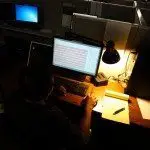
I round the final corner and see Elias, a 17-year Crowley Imaging veteran. Elias is post-processing scanned microfilm using Mekel Technology’s QuantumProcess. These are no ordinary images; they’re the papers of a late 19th century U.S. President. Crowley Imaging has digitized several Presidential collections and the thrill never wanes.
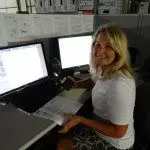
After post-processing, clients elect to receive their final images in many forms. For an analog project – when digitized images are written to microfilm – they may choose microfilm in different sizes (16mm or 35mm) and types (silver, vesicular, diazo) depending on the anticipated final use. For a digital conversion project, the delivery method is usually dictated by the size of the project and/or the client’s IT infrastructure. The digital images of a smaller project might be delivered on a thumb drive, while a high volume project might be output to an external hard drive (which Vicki is holding) or via ftp (file transfer protocol) directly into a client system.
Mission Accomplished.
I needed inspiration and my service bureau walkabout delivered. In less than five minutes and three aisles, I traveled from archives of the 19th and 20th centuries to the business processing systems of today. My quick journey reinforced that what we do matters – always for the client and often for the public. Along the way, I was reminded that 27 steps away, I have some pretty terrific co-workers.
Interesting in learning more about Crowley Imaging?
If you have any questions about digitizing archival collections or ongoing business records and claims or saving digital records to microfilm, please contact The Crowley Company by calling (240) 215-0224. General inquiries can be emailed to [email protected]. You can also follow The Crowley Company on Facebook, Twitter, Google+, LinkedIn, Pinterest, and YouTube.

